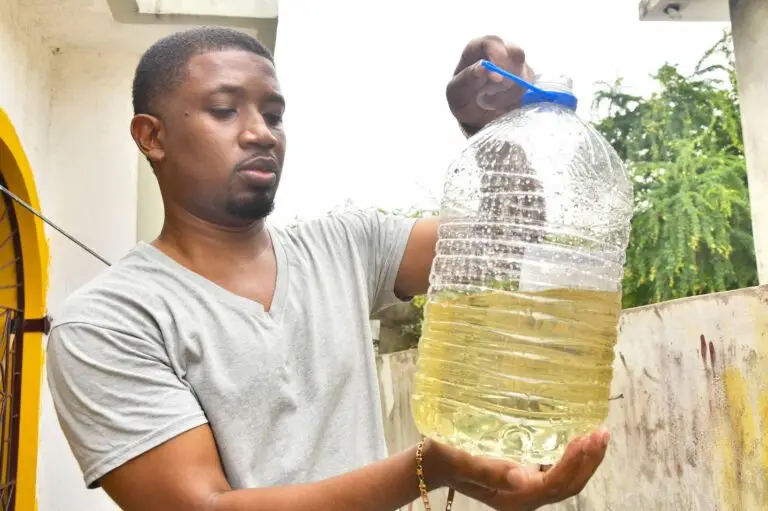In Wickie Wackie, St. Andrew, frustration is mounting as residents contend with a persistent issue that has plagued their community for years: discolored, sediment-filled water flowing from their taps. The reddish hue of the water, coupled with frequent supply interruptions, has left many households grappling with additional costs and limited options.
Local resident Evelyn Graham describes the reality of living with contaminated water as “exhausting.” She recalls decades of red-tinted water that stains clothing, irritates the skin, and makes daily chores a burden. “You wake up, turn on the tap, and it’s like a nightmare all over again. Sometimes you have to let it run for hours just to see some improvement,” Graham said.
Others, like Natshon Edwards, have taken costly measures to mitigate the problem. Edwards has spent thousands on water tanks and regular refills to avoid using the unsafe supply. “This isn’t just inconvenient—it’s unsustainable. I’m paying for a service I can’t even trust to be clean,” he explained.
Efforts to address the situation have often been met with delays. Edwards recounts how he contacted the National Water Commission (NWC) last year, only to face months of back-and-forth emails and limited on-site interventions. According to Edwards, even when representatives visited, no lasting solutions were implemented.
Some residents, like Imani Tafari-Ama, have invested in expensive filtration systems, only to find them insufficient against the relentless contamination. “It’s not just the water—it’s the infrastructure,” Tafari-Ama argued, pointing to outdated pipelines as the likely source of the issue.
Despite decades of complaints, the problems have only worsened. Residents speculate that ongoing construction projects and poorly maintained infrastructure have exacerbated the situation. “This is not just a Wickie Wackie issue. It’s a systemic failure to invest in proper maintenance and upgrades,” said a long-time resident who wished to remain anonymous.
For many, the burden goes beyond financial costs. Dahlia, who has lived in the area for over 30 years, expressed her frustration at the toll the issue takes on daily life. “You can’t plan anything. Washing clothes, taking a shower, even cooking—all of it becomes a challenge when you’re dealing with water that’s more mud than liquid.”
Calls for a comprehensive resolution have been growing louder. Residents suggest that a combination of infrastructure upgrades, improved filtration systems, and consistent maintenance could bring long-overdue relief. “We’ve been patient long enough. This isn’t just about convenience—it’s about dignity and safety,” Graham emphasized.
As the community awaits action, the contaminated water serves as a stark reminder of the essential role clean water plays in daily life. For Wickie Wackie residents, the hope is that their cries for change will finally be heard.






